Parrots are intelligent, social birds that rarely bite in the wild unless protecting resources like nests, food, or mates. However, in captivity, aggressive parrot behavior often emerges due to limited space, clipped wings, or forceful human interactions. Caregivers frequently command rather than ask, ignore body language, or force handling, leaving parrots no escape. This guide explores the causes of aggressive parrot behavior, key body language cues, and proven strategies to prevent bites and build trust.
Understanding your parrot’s signals is crucial for harmonious living. In the wild, parrots use body language and vocalizations to ward off threats without physical contact. Domesticated parrots, trapped in cages or small aviaries, resort to biting when flight isn’t an option. By becoming more sensitive to their needs, you can diffuse tension before it escalates.
Key Body Language Signs of Aggressive Parrot Behavior
Parrots communicate primarily through body language, and they’re hyper-aware of yours. Unfortunately, humans often miss subtle cues while distracted by daily tasks like watching TV or cooking. Always observe your parrot: heavier breathing, tighter grip on perches, widened eyes, slight head retraction, leaning away, or darting glances signal discomfort.
More obvious signs include raised or flattened feathers, flushing skin on a macaw’s face, repeated gaping (wide beak opening), standing tall with pinned eyes and raised crest, spread tail, or crouching with open beak. These indicate “back off”—whether from fear, excitement, or aggression. For instance, scarlet macaw behavior often shows facial flushing as a clear warning.
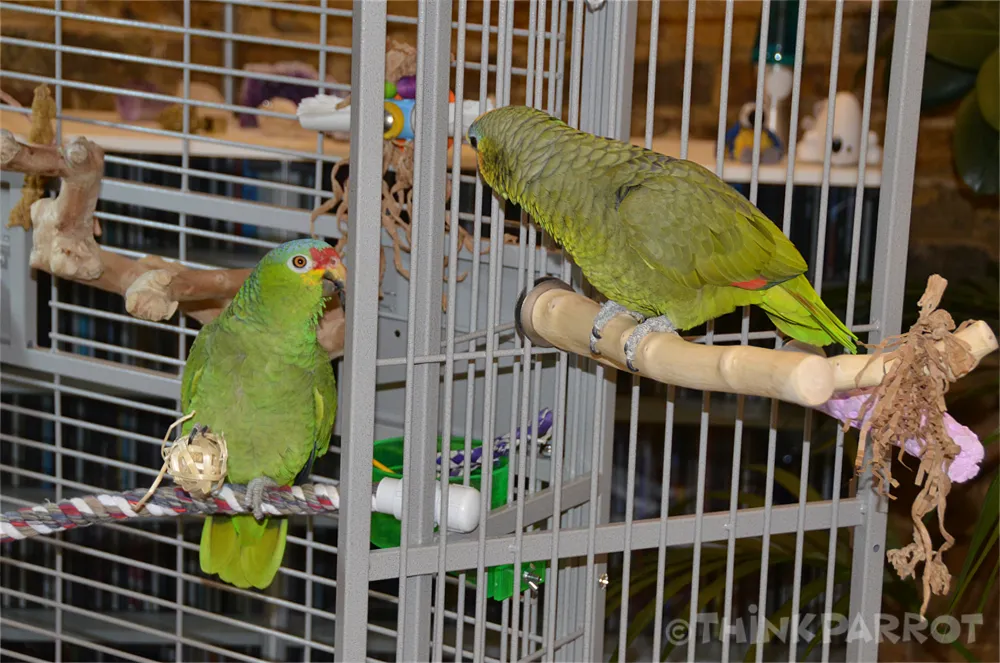 Bobbie warning Ollie with raised feathers and intense stare
Bobbie warning Ollie with raised feathers and intense stare
With my Pionus parrot Kobe, raised feathers on his head and shoulders mean immediate retreat and averted eyes. A soft “huh” mimicking his relaxed vocalization helps de-escalate. Ignoring these signs leads to “out-of-the-blue” bites as parrots stop signaling.
 Kobe displaying aggressive posture with raised feathers
Kobe displaying aggressive posture with raised feathers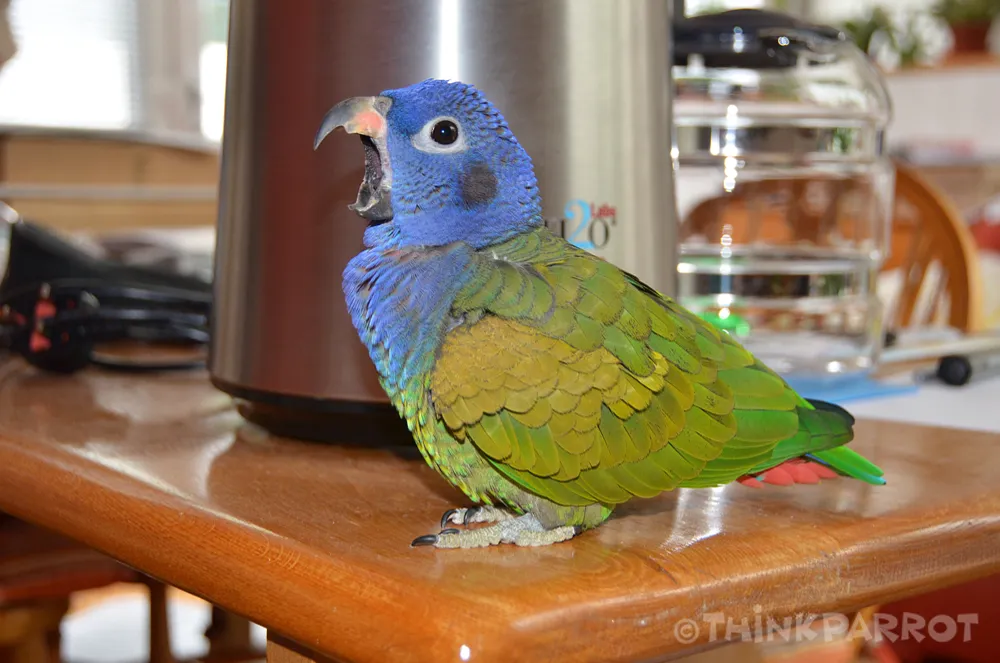 Kobe gaping with wide-open beak signaling discomfort
Kobe gaping with wide-open beak signaling discomfort
Preventing Aggressive Parrot Behavior Through Antecedent Changes
Prevention starts with altering what happens before the behavior. Ask: “What triggered this?” Approaching a cage directly often prompts lunging or bar-biting. Solutions include relocating the cage, zigzagging approaches, or removing the bird first for cleaning.
Teach targeting or stationing to a perch with treats, keeping them occupied elsewhere. For blind Panama Amazon Chico, soft singing during cleaning paired with stationing cues enabled peaceful head rubs. This builds positive associations.
 Chico stationing calmly on perch for head rub reinforcement
Chico stationing calmly on perch for head rub reinforcement
Avoid over-excitement during play—pause to let them calm. For resource guarding, station them away with treats while handling food or toys. Protect feet with shoes or desensitize gradually, as I did with Red-lored Amazon Bobbie using a blanket. Block nesting sites like boxes or cupboards, enriching playstands instead. For visitors, cage the bird and prevent close approaches.
These antecedent strategies make aggression impossible, fostering success and trust.
Related insights into social behaviour of birds highlight how environmental tweaks promote natural interactions.
Why Punishment Fails and Alternatives Succeed
Punishment escalates aggression, creates fear, apathy, or phobias, and erodes trust by pairing you with negatives. Instead, use negative reinforcement like Constructional Aggression Treatment (CAT).
CAT reinforces relaxation by removing the aversive (you) when the parrot shows calm behaviors. Start distant, approach to sub-threshold discomfort (e.g., slight breathing change), retreat on relaxation cues like preening. Gradually close distance, keeping sessions short (5-10 minutes). Transition to positive reinforcement with treats once relaxed.
Professional timing is key; I’ve used similar negative reinforcement successfully with fearful parrots.
Building Positive Behaviors and Managing Hormones
Expand your parrot’s repertoire through training like targeting, touching a stick for treats. Involve family for broad positive pairings. Provide enriching setups: hanging swings, playstands with foraging toys, keeping them busy during your routines.
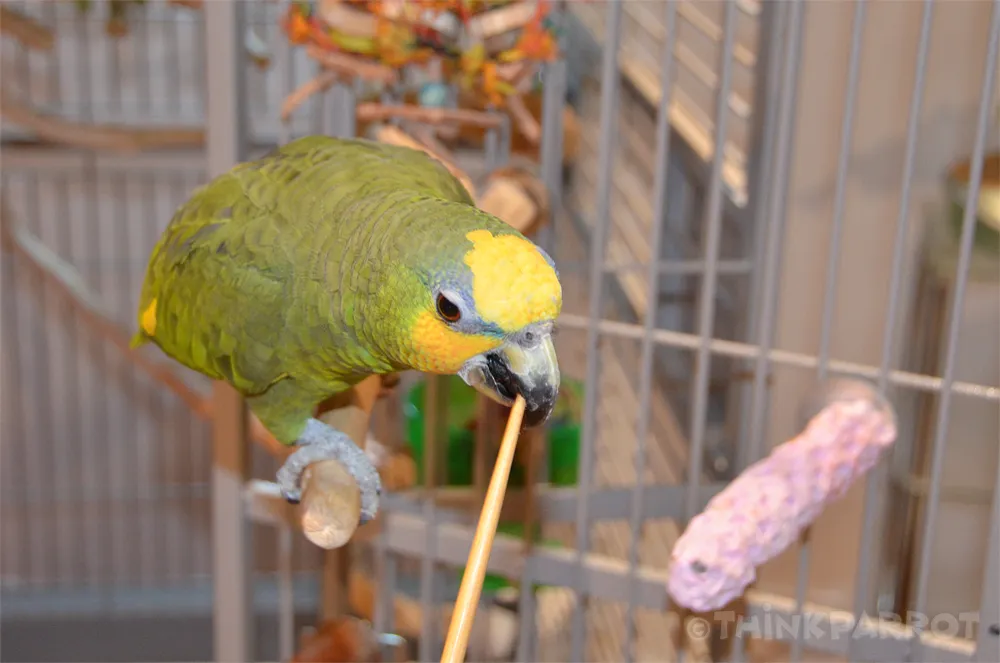 Ollie targeting chopstick end accurately for reinforcement
Ollie targeting chopstick end accurately for reinforcement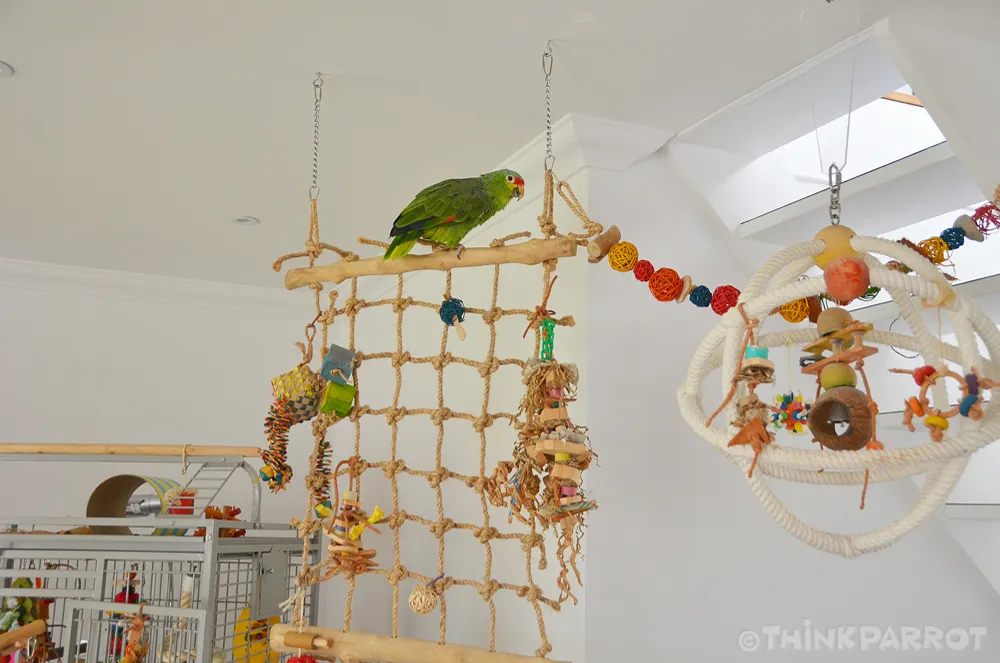 Bobbie engaged in cargo net foraging activity
Bobbie engaged in cargo net foraging activity
Hormones amplify sensitivity but follow behavior rules. Discourage pair-bonding: no cuddling beyond brief head/neck strokes, promote independent play. Use CAT and targeting for targeted family members. Remove nests, ensure flight exercise, balanced diet (avoid mushy/warm foods, excess carbs/fats), and 10-12 hours sleep in a quiet space.
Lovebird mating behavior and male lovebird mating behavior exemplify how hormonal drives mimic parrot issues—prevention is key.
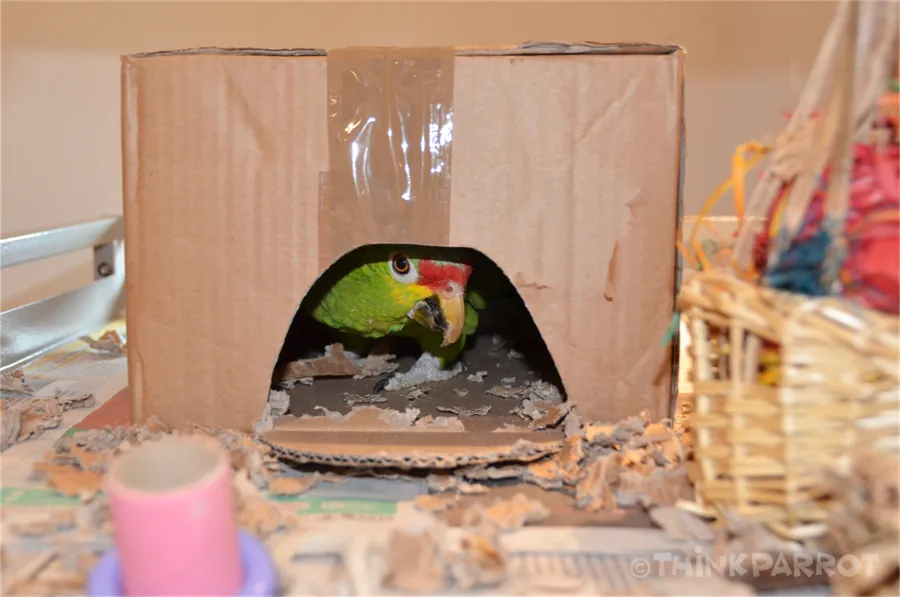 Bobbie inside a box perceived as nesting site
Bobbie inside a box perceived as nesting site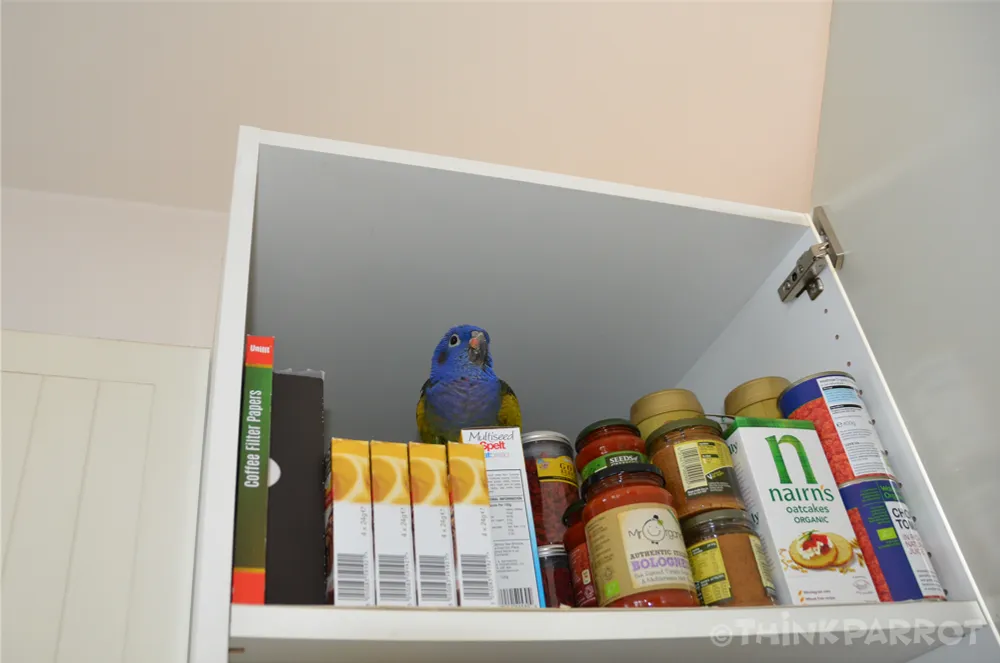 Kobe in cupboard showing defensive body language
Kobe in cupboard showing defensive body language
African grey parrot screaming often ties to similar frustrations.
Responding to Bites and Long-Term Success
If bitten, react calmly to show pain without drama—avoid reinforcing high-energy responses. Put them down, walk away if hyped. For flying attacks, duck and retreat.
Catch issues early: heed body language, adjust antecedents, pair with positives via training, enrich environments. A busy, successful parrot engages less in aggression.
Conclusion
Aggressive parrot behavior stems from stress, not inherent meanness—address it with empathy, observation, and science-based strategies like CAT, targeting, and enrichment. Consult avian vets or behaviorists for tailored advice, ensuring your parrot thrives. Start today for a bite-free bond. Explore more on parrot care for deeper insights.
Resources
- Steve Martin’s Understanding Behavior, Naturally: https://naturalencounters.com/wp-content/uploads/2020/04/Understanding_Parrot_Behavior_Naturally-Steve_Martin.pdf
- Dr. Susan Friedman’s Alternatives to Breaking Parrots: https://www.behaviorworks.org/files/articles/Alternatives%20to%20Parrot%20Breaking%202002.pdf
- Pamela Clark’s Avoiding Aggression with Start Buttons: https://blogpamelaclarkonline.com/2019/01/31/parrot-and-start-buttons/
- Pamela Clark’s Aggression in Parrots: https://blogpamelaclarkonline.com/tag/aggression-in-parrots/
- Barbara Heidenreich’s Addressing Aggressive Behavior in Birds: https://journals.tdl.org/watchbird/index.php/watchbird/article/download/1869/1842
- Dr. Susan Friedman’s Parrots in Temporary Shelters: https://www.behaviorworks.org/files/articles/Parrots%20in%20Temporary%20Shelters%202004.pdf
- Mario Ancic’s Constructional Aggression Treatment (CAT): https://www.training-your-dog-and-you.com/constructional_aggression_treatment.html
- Barbara Heidenreich’s podcast on CAT with Kellie Snider: https://animaltrainingfundamentals.com/podcasts/c-a-t-with-kellie-snider/
- Barbara Heidenreich’s podcast on CAT with Jesus Rosales-Ruiz and Mary Hunter: https://animaltrainingfundamentals.com/podcasts/effective-reinforcement-with-jesus-rosales-ruiz-and-mary-hunter/
Further reading: Help! My Parrot Bites!
